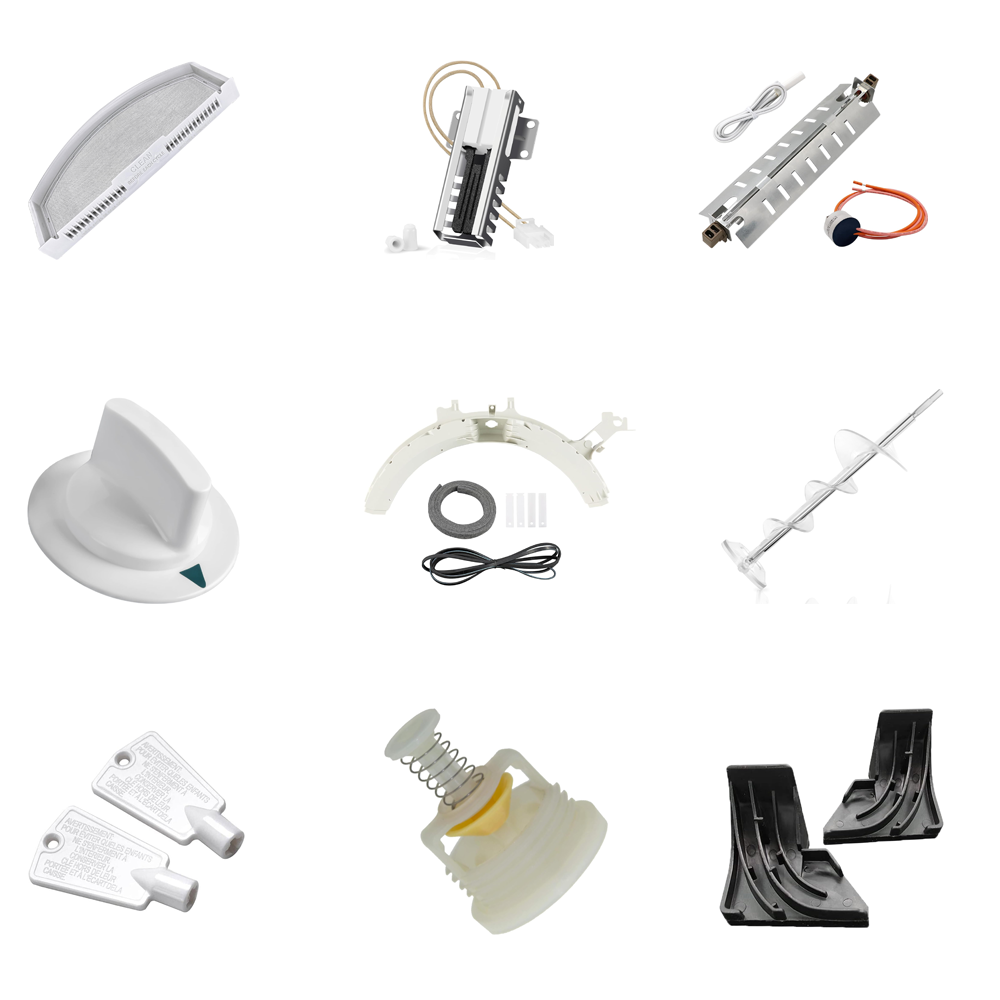Understanding the Importance of Quality in GE Parts
Why Quality Control Matters in Wholesale Distribution of GE Parts
For industrial operations to run smoothly, GE Parts need to hit those exact mechanical and electrical specs every time. When wholesale distributors get their quality control right, they can cut down equipment downtime quite a bit actually around 37% according to a study from the Ponemon Institute back in 2023. Plus, this attention to detail makes sure everything works together properly whether its power systems, turbines or automation gear. Looking at some real world data from an audit of wholesale distributors shows just how big a difference certification makes. Facilities that stick with certified GE components are running at about 92% uptime while places going for cheaper uncertified options only manage around 76%. That gap adds up over time for anyone managing plant operations.
Common Risks of Distributing Low Quality GE Parts
- Premature component failure in high-temperature environments
- Safety hazards due to material defects in pressure-bearing systems
- Compliance violations from mismatched electrical ratings
A 2024 supply chain analysis revealed that low-grade knockoffs failed 19x faster under load testing than OEM-certified units, highlighting the critical performance gap.
Impact of Part Failure on Industrial Operations and Safety
Component malfunctions in critical infrastructure can lead to:
- $740k average production losses per unplanned outage (Ponemon 2023)
- 2.8x higher risk of workplace injuries in energy facilities
- Permanent damage requiring full subsystem replacements
Industrial buyers sourcing from ISO 9001-certified suppliers report 83% fewer maintenance incidents over a 5-year equipment lifecycle, underscoring the long-term value of quality assurance.
How to Identify Genuine GE Parts Using Serial Numbers and Markings
Authentic GE parts come with laser etched serial numbers and special holograms that actually shift colors when exposed to ultraviolet light. Anyone wanting to check authenticity can do so using GE's online portal called Verify Authenticity. The system gets updated every day with new batch information from manufacturing plants. Fake GE components tend to miss those tiny engraved logos or have weird font inconsistencies on them. Supply chain experts found this problem in roughly 8 out of 10 counterfeit parts they examined throughout 2023. These little details matter because they help prevent dangerous equipment failures down the road.
The Role of OEM Certification in Ensuring GE Parts Quality
GE’s OEM certification requires rigorous material testing and quarterly factory inspections. Suppliers must pass 23 distinct quality checks, including chemical composition analysis and dimensional tolerance verification within ±0.002 inches. According to 2022 industrial maintenance data, this process reduces premature failure rates by 94% compared to uncertified alternatives.
Third-Party Verification Services for Wholesale GE Parts
ISO 17025-accredited laboratories offer independent validation through:
- X-ray fluorescence spectroscopy for alloy verification
- Thermal cycling tests (-40°F to 356°F)
- Dielectric withstand testing at 150% rated voltage
These methods detect 19% of nonconforming parts missed during visual inspections, based on a 2024 review of 12,000 components.
Case Study: Detecting Counterfeit GE Components in Bulk Shipments
A 2023 Material Integrity Study uncovered counterfeit breakers in 14% of bulk electrical shipments to manufacturing plants. Investigators used microscopic wear pattern analysis and EDX elemental testing to identify substandard silver plating (98.2% pure vs. GE’s 99.99% standard). This led 37 facilities to implement mandatory spectrometer checks upon receipt.
Evaluating and Qualifying Reliable GE Parts Suppliers
Key Criteria for Selecting Reliable Suppliers of GE Parts
When looking for trustworthy GE Parts suppliers, there are several key factors worth considering beyond just price. First things first, check if they have proper certifications like ISO 9001 or AS9120. These aren't just fancy letters on paper they actually show that the supplier follows established quality control procedures throughout their operations. Good suppliers will go above and beyond basic requirements too. Ask them for actual proof that their parts meet the specs from the original manufacturer. This means getting hold of real material test reports and seeing copies of performance tests conducted under similar conditions. Some companies might try to cut corners here, so don't hesitate to dig deeper when something doesn't quite add up.
Auditing Supplier Facilities and Quality Management Systems
On-site audits are essential for assessing manufacturing rigor. Evaluate calibration logs, storage conditions for sensitive components, and defect tracking processes. Require evidence of first-article inspections and statistical process controls to catch deviations early. Disqualify suppliers lacking cleanroom environments for electrical components or temperature-controlled warehouses.
Evaluating Supplier Track Record With Industrial Clients
Assess suppliers through three lenses: partnership longevity (minimum 5 years), vertical specialization (experience with your equipment types), and responsiveness in resolving failures. Cross-reference testimonials with third-party platforms like Thomasnet to verify delivery reliability. For large orders, request access to historical mean time between failures (MTBF) data compared to OEM benchmarks.
Pro Tip: Use a scoring matrix weighting audit results (40%), certification validity (30%), and client satisfaction metrics (30%) to standardize supplier evaluations.
Conducting Rigorous Quality Testing for GE Parts
Standard testing procedures for mechanical and electrical GE Parts
To ensure GE Parts work properly, companies should follow protocols based on ISO 9001 standards. When it comes to mechanical components, they're put through their paces with load tests going well beyond normal limits, sometimes reaching 150% of what they're rated for. Torsion analysis checks how much twisting force they can handle, while fatigue simulations run them through thousands upon thousands of cycles to see if anything breaks down over time. For electrical parts, there are tests that check insulation strength at twice the usual operating voltage. Thermal imaging is also used to spot any areas getting too hot during operation. According to a recent industry report from 2024, most problems in industrial systems actually come from electrical connectors that weren't properly tested first, accounting for around 92% of all failures in power distribution networks across various facilities.
Using non-destructive testing methods in wholesale quality assurance
Non-destructive testing (NDT) enables thorough inspection without damaging parts:
- Ultrasonic testing detects subsurface cracks in metal castings with 0.1mm resolution
- Eddy current analysis verifies conductivity in copper windings
- Infrared spectroscopy identifies polymer degradation in insulators
ASNT 2023 data shows these techniques reduce waste by 45% versus destructive sampling while ensuring 100% batch compliance.
Performance benchmarking against original GE specifications
Every single part needs to stick within strict OEM specifications these days. Bearings have to be within plus or minus half a micrometer, while sensor resistance variations can't exceed one percent either. After manufacturing is done, we run dimensional tests using those fancy Coordinate Measuring Machines and check electrical signatures against what GE calls their Gold Standard reference points. This helps avoid all sorts of compatibility headaches down the line. Anything that shows more than three percent drift in performance gets tossed out right away since it just won't work properly with GE's iFIX control systems. The whole system works pretty well actually cutting warranty problems by around two thirds and getting almost perfect results on the first try during turbine assembly with a success rate of nearly 99.98%.
Leveraging Technology for Traceability and Quality Monitoring of GE Parts
Blockchain and Digital Twins in GE Parts Traceability
Blockchain tech builds records that can't be altered once created, tracking where parts come from and how they've been handled throughout their lifecycle. Recent research from 2024 shows companies using blockchain see around a 60% drop in fake products entering supply chains, plus nearly 40% faster audits when checking documentation. Digital twin technology takes this further by creating virtual models that predict how components will perform under actual conditions before installation. Most factories today are putting QR codes and RFID chips into products so everyone involved - engineers, quality control teams, regulators - can pull up detailed info on specs, service history, and whether all safety standards have been met through centralized online systems.
IoT-Enabled Monitoring for Real Time Condition Assessment
GE Parts now come with built-in IoT sensors that keep an eye on things like vibration levels, temperature changes, and how much weight they're handling at any given moment. All this information gets sent up to cloud based analysis systems which then send out warnings whenever something starts acting outside what the manufacturer considers normal. For rotor parts specifically, those connected to IoT networks see about half as many surprise breakdowns as ones checked only during manual inspections. Retailers who deal in these parts can actually test how well they perform before selling them off, figure out when repairs might be needed thanks to some pretty smart algorithms, and pass along useful information to whoever ultimately buys and uses them.
Table of Contents
-
Understanding the Importance of Quality in GE Parts
- Why Quality Control Matters in Wholesale Distribution of GE Parts
- Common Risks of Distributing Low Quality GE Parts
- Impact of Part Failure on Industrial Operations and Safety
- How to Identify Genuine GE Parts Using Serial Numbers and Markings
- The Role of OEM Certification in Ensuring GE Parts Quality
- Third-Party Verification Services for Wholesale GE Parts
- Case Study: Detecting Counterfeit GE Components in Bulk Shipments
- Evaluating and Qualifying Reliable GE Parts Suppliers
- Conducting Rigorous Quality Testing for GE Parts
- Leveraging Technology for Traceability and Quality Monitoring of GE Parts

